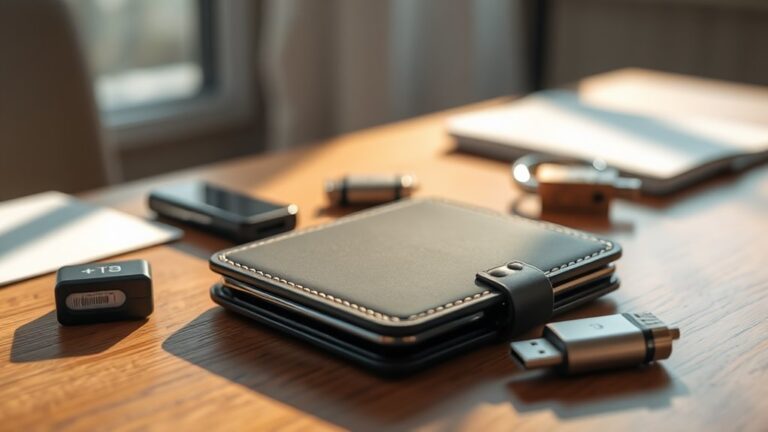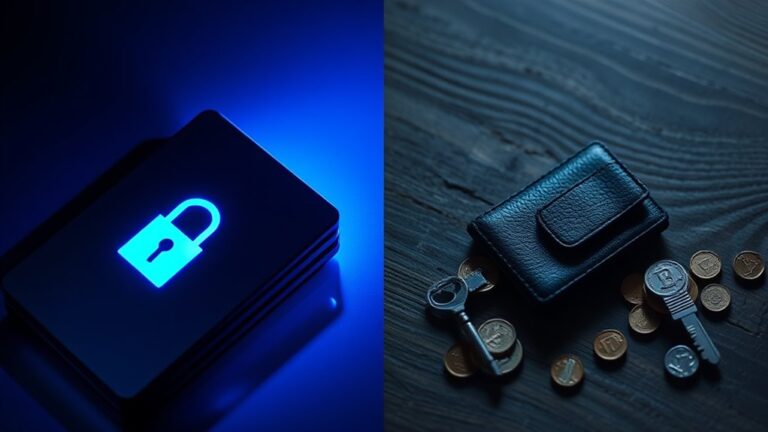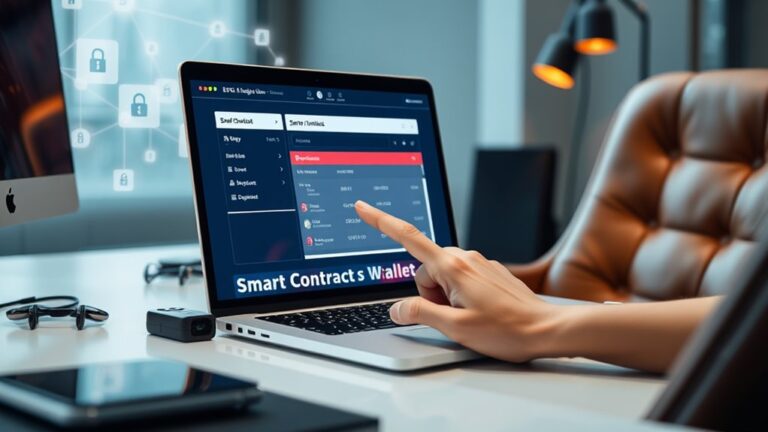
How to Set Up a Crypto Wallet: A Step-by-Step Guide
To set up a crypto wallet, first choose between software or hardware options based on personal needs. For software wallets, download a reputable app, create an account using a strong password, and enable two-factor authentication for added security. For hardware wallets, purchase a device from an official source, follow setup instructions, and securely back up your recovery seed. Always prioritize security practices and regularly review wallet settings. More detailed steps and tips await for a thorough understanding.
Key Takeaways
- Choose the right type of wallet (hot or cold) based on your transaction needs and security preferences.
- For software wallets, download from official sources and ensure strong passwords and two-factor authentication are enabled.
- For hardware wallets, purchase from authorized retailers, verify package integrity, and securely back up your recovery seed phrase.
- Set up custodial wallets by creating an account with a reputable exchange, completing identity verification, and linking your phone for two-factor authentication.
- Regularly update wallet software, back up recovery phrases, and monitor your account activity to maintain security.
Understanding Crypto Wallets
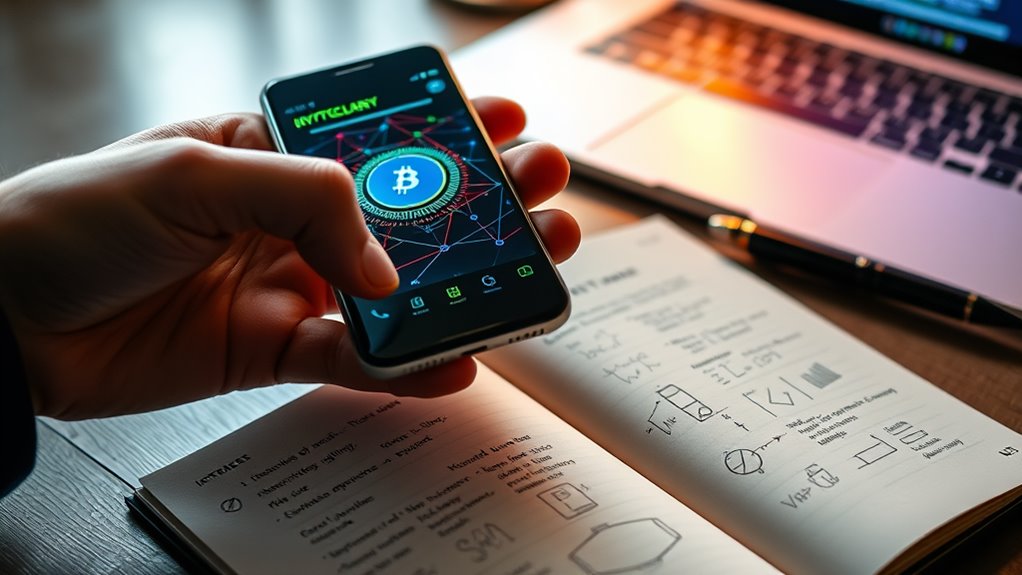
Understanding cryptocurrency wallets is essential for anyone looking to engage in the digital currency space. A cryptocurrency wallet serves as a device, program, or service that stores the keys necessary for conducting transactions.
It primarily holds public and private keys, where the public key allows users to receive cryptocurrency, while the private key is vital for sending it. Transactions are recorded on the blockchain, linked to public addresses rather than the wallet itself.
Wallets also encrypt and sign information, ensuring secure transactions. Key pairs are generated mathematically and can be created offline, enhancing security. Additionally, crypto wallets come in various forms, including software, hardware, and paper wallets, each providing different levels of security and convenience.
Types of Crypto Wallets

In the domain of cryptocurrency, understanding the various types of wallets is essential for secure management of digital assets.
Software wallets offer convenience for frequent transactions, while hardware wallets provide enhanced security through offline storage.
Additionally, custodial wallets, managed by third parties, present features that simplify access but limit user control over private keys. Furthermore, users should consider the differences between custodial and noncustodial wallets to determine the best option for their needs.
Software Wallets Overview
Software wallets represent a key component in the cryptocurrency ecosystem, providing users with essential tools for managing their digital assets. These wallets come in various forms, including web-based platforms, mobile apps, desktop applications, and browser extensions. They allow users to send, receive, and manage multiple cryptocurrencies across different blockchains.
While software wallets are convenient and easy to use, they are more vulnerable to hacking due to their internet connectivity. Non-custodial options enable users to store their private keys locally, ensuring greater control over their assets. Popular examples include MetaMask, Mycelium, and Electrum. To enhance security, users should follow best practices such as using strong passwords and enabling two-factor authentication.
Hardware Wallets Explained
Hardware wallets serve as an essential option for individuals looking to securely store their cryptocurrencies. These devices, resembling USB drives, function as single-purpose computers that keep private keys stored locally.
Unlike software wallets, hardware wallets are not connected to the internet except during transactions, greatly reducing the risk of hacking. Transactions are securely signed within the device, ensuring that private keys are never exposed in plaintext.
Popular hardware wallets include Ledger, Trezor, and ELLIPAL, each offering unique features for enhanced security. Users are advised to purchase from reputable sources and follow setup instructions carefully. Additionally, hardware wallets provide a secure offline storage solution for private keys, safeguarding assets from online threats.
Custodial Wallets Features
Custodial wallets represent a popular choice among cryptocurrency users, particularly for those who prefer ease of use and convenience. These wallets involve a third party managing users’ private keys, which means users do not have direct control over their assets.
Commonly offered by centralized exchanges like Coinbase and Kraken, custodial wallets are often web-based, making them accessible for beginners. They provide security features such as two-factor authentication and encryption to safeguard funds.
Additionally, custodial wallets can integrate with financial services like staking and yield farming, enhancing user experience. However, users must trust the custodian, as they face risks such as potential hacking and government seizure during legal issues. Therefore, choosing reputable providers is essential.
While custodial wallets offer convenience, they are generally more vulnerable to security breaches compared to non-custodial wallets, which allow users to maintain control over their private keys.
Choosing the Right Wallet
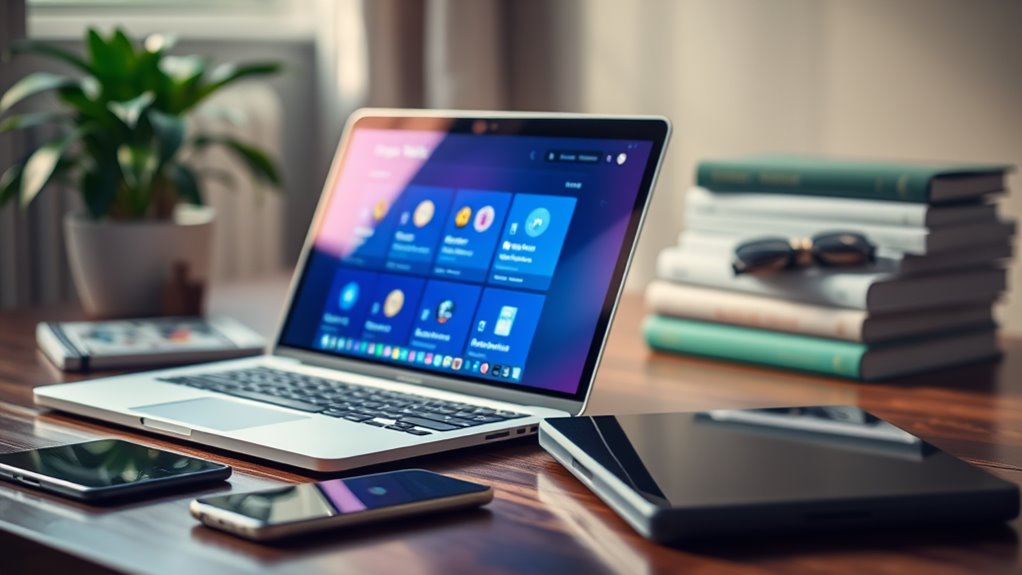
When selecting a crypto wallet, what factors should users consider to confirm their digital assets are secure and accessible?
First, users should evaluate security features such as encryption, two-factor authentication, and multi-signature support. They must decide between cold wallets, which store keys offline for enhanced security, and hot wallets, which are online but more vulnerable. Many users find that a combination of both wallet types can provide a balance between convenience and security.
Evaluate security features like encryption and two-factor authentication while choosing between cold and hot wallets for optimal protection.
Platform compatibility is also important; users should choose wallets that work across multiple devices, including desktop, mobile, and web platforms.
Additionally, checking cryptocurrency support is crucial to verify the wallet accommodates various coins and tokens.
Finally, a user-friendly interface, customizable fees, and reliable support can greatly improve the overall experience, making transactions smoother and more efficient.
Setting Up a Software Wallet
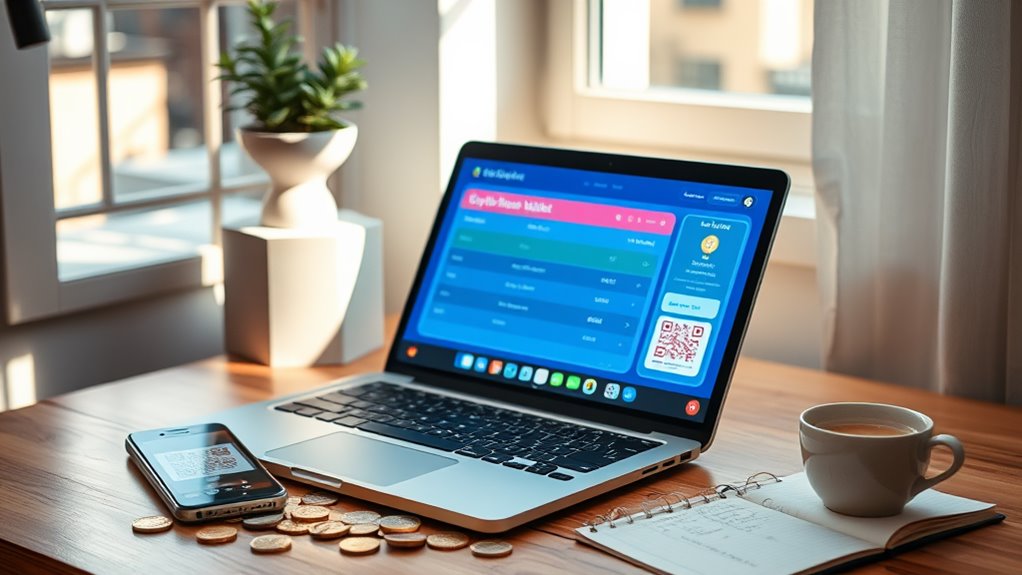
Setting up a software wallet begins with selecting a reputable wallet provider, as this choice is vital for security and functionality.
After confirming the provider’s legitimacy, the user should download the application from the official website to prevent potential scams.
Finally, establishing strong security measures, such as a secure password and enabling two-factor authentication, is essential to protect the wallet and its contents. Additionally, choosing a wallet like Coinbase Wallet can enhance the user experience with its support for a wide range of digital assets.
Selecting Wallet Provider
Selecting a wallet provider is an essential step in setting up a software wallet, as it directly impacts the security and usability of cryptocurrency management. Users should prioritize key security features like two-factor authentication and backup options to protect their funds.
Additionally, a wallet that supports multiple currencies, such as Exodus or Guarda, can enhance usability. A user-friendly interface is crucial for maneuvering through transactions effectively. Moreover, responsive customer service is important for resolving potential issues.
Users should also consider budget implications, as many software wallets are free but may involve transaction fees. Finally, choosing a provider with a strong reputation enhances trust and security in managing cryptocurrency assets effectively. Notably, wallets like Exodus Wallet are renowned for their built-in exchange features, making them suitable for both beginners and advanced users.
Downloading the App
Downloading a wallet app is an essential step for anyone looking to manage their cryptocurrency effectively. To begin, it is vital to select a wallet app that supports the specific cryptocurrencies intended for use.
Users should always download from official app stores, such as Google Play or the Apple App Store, to guarantee security. Popular wallet options include Coinbase, Trust Wallet, and MetaMask, which are generally compatible with both iOS and Android devices.
Before installation, users must verify that their device has enough storage space and a stable internet connection. Some wallets might require identity verification during setup, which is an important consideration to keep in mind. Additionally, ensure that your wallet is capable of interacting with crypto payment gateways to facilitate seamless transactions.
Following these guidelines will facilitate a smooth downloading process.
Setting Up Security
After successfully downloading the wallet app, users must prioritize security to protect their cryptocurrency assets. Keeping the software updated is essential, as regular updates provide the latest security patches.
Users should create strong passwords and enable two-factor authentication for an added layer of protection. Avoiding public Wi-Fi during transactions is also critical for maintaining safety.
For enhanced security, utilizing TLS/SSL encryption secures communication with servers, while certificate pinning helps prevent man-in-the-middle attacks. Additionally, users should consider storing cryptocurrencies in a cold wallet to further reduce exposure to online threats.
Users can further secure private keys using hardware-backed storage or cold storage options. Implementing biometric authentication, like fingerprints, simplifies access without compromising security.
Regularly backing up the wallet’s recovery phrase is fundamental to recover assets in case of device loss or theft.
Setting Up a Hardware Wallet
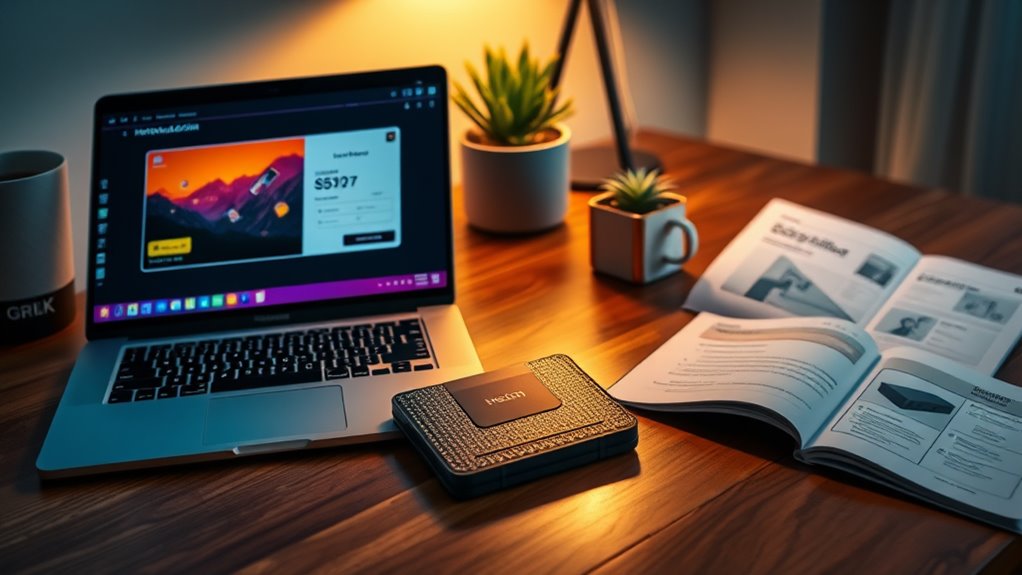
Setting up a hardware wallet is an important step for anyone looking to securely manage their cryptocurrency assets. To begin, users should purchase the wallet from official channels, guaranteeing authenticity.
Upon receiving the device, it is vital to verify that the package is sealed to prevent tampering. Next, they must download the required software, such as Ledger Live, and connect the device via USB. A strong PIN should be established to enhance security.
Users then generate a recovery seed phrase, which must be backed up securely offline. Finally, confirming the seed phrase by re-entering the selected words guarantees proper setup.
Setting Up a Custodial Wallet

Setting up a custodial wallet involves several important steps to guarantee a smooth experience.
First, users must choose a reliable exchange that is known for its reputation, security, and ease of use.
After selecting a platform, they can create an account and secure their assets through robust password management and additional security features like two-factor authentication.
Choosing a Reliable Exchange
When choosing a reliable exchange for setting up a custodial wallet, one must consider various factors that can impact the overall experience and security of their assets.
A well-chosen exchange can enhance the safety and ease of managing cryptocurrencies.
Key considerations include:
- Security: Select exchanges that offer strong security features, such as two-factor authentication and insurance against theft.
- User Interface: An intuitive user interface is essential for users of all skill levels, making navigation straightforward.
- Regulatory Compliance: Ascertain the exchange adheres to relevant financial regulations, adding a layer of trust and reliability.
Creating Your Account
Creating an account for a custodial wallet is an essential step for individuals looking to manage their cryptocurrency securely. The process typically begins by registering with an email address and creating a password.
Users may also need to provide additional personal information for identity verification, often required through Know Your Customer (KYC) protocols. Linking a phone number for two-factor authentication enhances security, and some platforms may prompt for this setup during registration.
Once the account is established, a unique wallet address is automatically generated, allowing users to receive cryptocurrency. This straightforward process is designed to facilitate easy access to trading while ensuring that security measures, including activity monitoring and regular updates, help protect user assets effectively.
Securing Your Assets
Securing assets in a custodial wallet involves several important considerations that users should keep in mind.
First, choosing a trustworthy platform is essential. Users should look for exchanges with strong security features, check user reviews, and consider transaction fees.
Second, understanding custodial wallets is fundamental; these wallets are managed by third-party providers and do not allow users to control their private keys.
Finally, security features play a significant role. Many custodial wallets offer two-factor authentication and insurance against potential loss.
Here are three key considerations:
- Select a reputable exchange with strong security measures.
- Familiarize yourself with the wallet’s cryptocurrency support.
- Ensure the platform is compliant with regulations and regularly updated.
Transferring Assets to Your Wallet
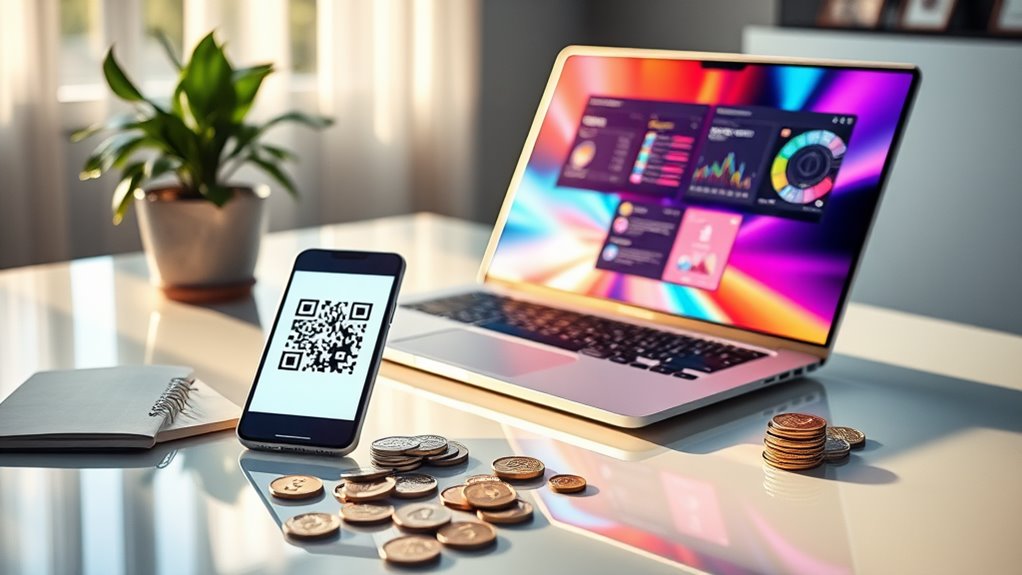
Transferring assets to a crypto wallet requires careful attention to detail to guarantee a smooth process.
First, the user must connect a hardware wallet, such as Ledger or Trezor, to a computer via USB or wirelessly. After installing the necessary software, like Ledger Live or Trezor Suite, they can generate a unique receiving address. This address is vital for transferring funds from an exchange.
Connect your hardware wallet to your computer and generate a unique receiving address to facilitate secure fund transfers.
The user should navigate to the withdrawal section of the exchange, paste the wallet address, and specify the amount to be transferred. Before finalizing the transaction, it is essential to review the details to avoid mistakes.
Once confirmed, the transaction will be processed on the blockchain, completing the transfer.
Best Practices for Wallet Security
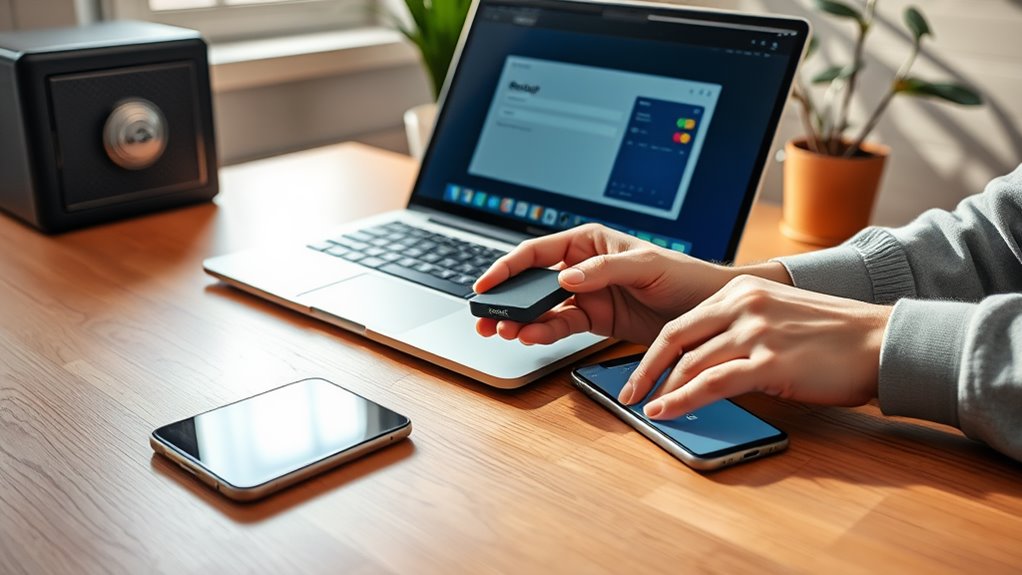
When it comes to managing cryptocurrency, following best practices for wallet security is essential for protecting digital assets.
To guarantee maximum security, users should adopt the following measures:
1. Store Private Keys Securely****: Write down seed phrases and private keys, then store them in fireproof or waterproof safes to prevent loss or damage.
Avoid keeping digital copies to reduce hacking risks.
2. Enable Two-Factor Authentication (2FA): Implement 2FA on wallets to add an extra layer of security against unauthorized access.
3. Use Secure Networks****: Conduct transactions only on secure, private networks and avoid public Wi-Fi, which can expose sensitive information to potential attackers.
Common Mistakes to Avoid
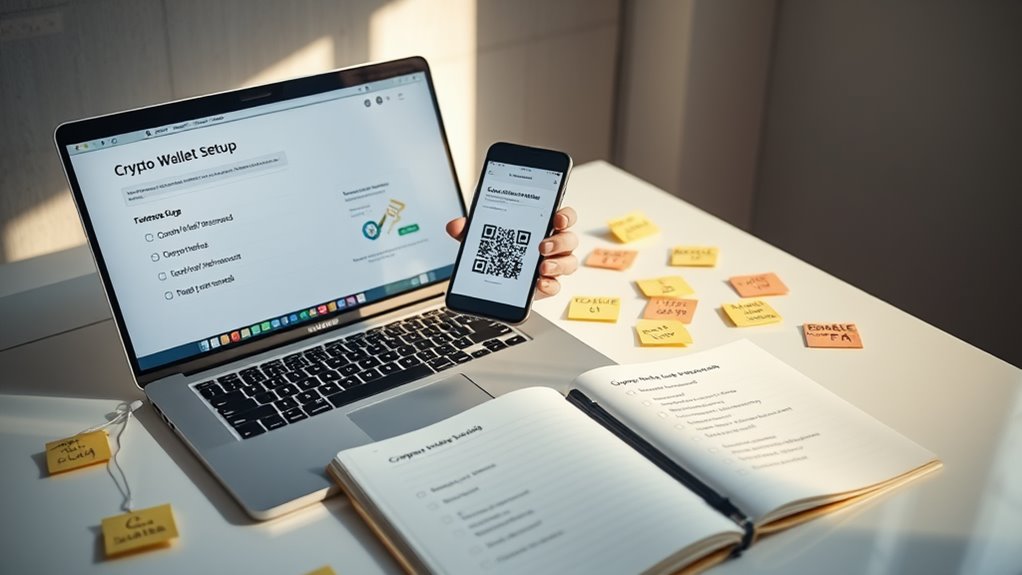
Setting up a crypto wallet can be a straightforward process, yet many users often overlook critical aspects that can lead to significant mistakes. A common error is failing to back up recovery phrases or private keys, risking permanent loss of access to funds.
Additionally, sharing private information can expose assets to theft. Conducting transactions over public Wi-Fi networks increases vulnerability to hackers, while neglecting security features like two-factor authentication leaves accounts unprotected.
Choosing an unsuitable wallet type, such as relying solely on hot wallets for major holdings, heightens the risk of attacks. Understanding these common pitfalls is essential for ensuring a secure and effective crypto wallet setup, ultimately protecting users’ valuable assets from unnecessary risks.
Keeping Your Wallet Updated
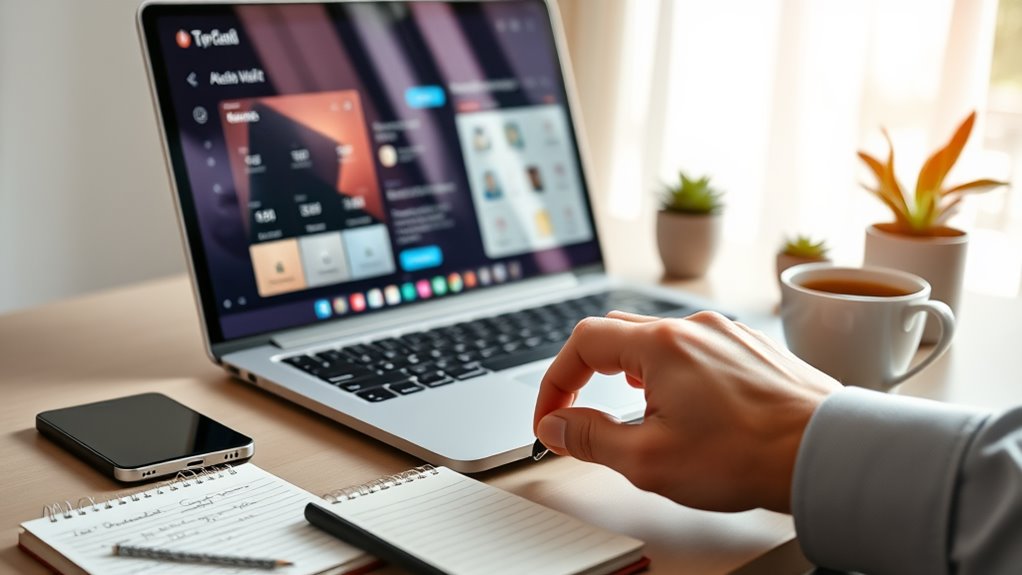
Keeping a crypto wallet updated is a key factor in maintaining security and functionality. Regular updates enhance features, support new blockchains, and provide vital security patches.
Users should consider the following best practices for keeping their wallets current:
- Enable Automatic Updates: Many wallets can automatically update on mobile devices if this feature is activated, guaranteeing users always have the latest security enhancements.
- Manual Checks: For wallets requiring manual updates, such as on Linux, users should regularly check for updates and follow the necessary procedures to install them.
- Backup Data: Before updating, it is essential to back up wallet data securely to prevent potential loss during the update process.
These practices help guarantee that a crypto wallet remains secure and functional over time.
Frequently Asked Questions
What Cryptocurrencies Can I Store in My Wallet?
Various cryptocurrencies can be stored in wallets, including Bitcoin, Ethereum, and Litecoin. Additionally, many wallets support tokens like ERC-20, BEP2, and stablecoins such as USDC, USDT, and DAI, ensuring diverse asset management options.
Can I Use Multiple Wallets for Different Cryptocurrencies?
Yes, individuals can use multiple wallets for different cryptocurrencies. This approach enhances security, allows for diversification, and aids in financial organization, ensuring that assets are managed according to specific needs and usage scenarios.
How Do I Recover My Wallet if I Lose My Device?
Approximately 20% of cryptocurrency holders have lost access to their wallets. To recover a wallet after losing a device, one must use the stored seed phrase to initialize a new device and restore access.
Are Crypto Wallets Insured Against Theft or Loss?
Crypto wallets can be insured against theft, particularly through specialized providers like OneInfinity. However, coverage typically excludes losses from user errors, such as losing private keys, highlighting the importance of secure key management.
What Happens if I Forget My Wallet Password?
Forgetting a wallet password results in irreversible financial loss, as access to the assets is permanently lost. Without centralized support or recovery options, users face significant challenges in regaining entrance to their cryptocurrency.
Conclusion
To sum up, setting up a crypto wallet involves understanding its types, choosing the right one, and following the setup procedures. By securing your assets through software or hardware wallets, transferring them safely, and implementing best practices for security, users can protect their investments. Avoiding common mistakes and keeping the wallet updated further enhances safety. With diligence and knowledge, individuals can navigate the crypto landscape confidently and securely manage their digital currencies.





